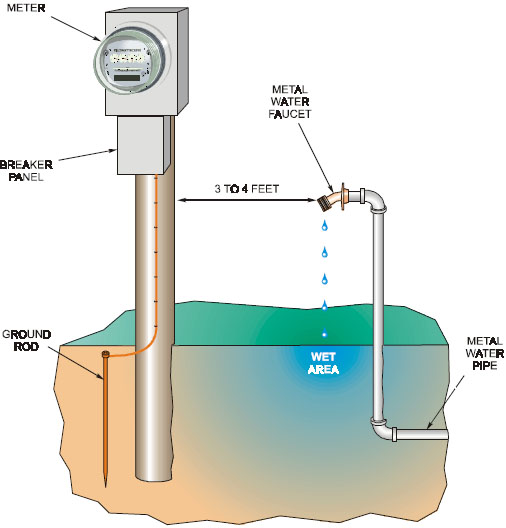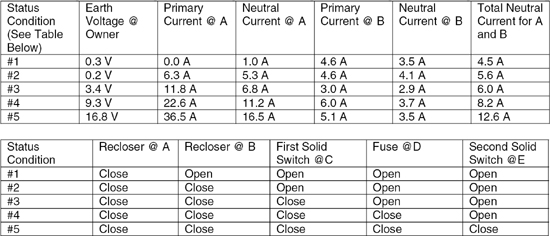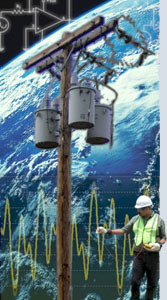Shocking at an RV Campground
Marion, North Carolina, USA
Background
Campers at a small RV campground were concerned about a shocking sensation they felt when they made an electrical connection to the breaker panel, as shown in Figure 1. Barefoot campers were getting shocked near the meter box when the soil was very wet due to a rainstorm or a leaking water faucet. Also, the owner of the RV campground experienced a shocking sensation when he touched the metal water faucet or the meter box.
 |
| Figure 1: Arrangement of the Meter, Ground Rod, and Metal Water Pipe at the RV Campground |
Possible Causes
The initial investigation considered several possibilities:
- Shorted element in the hot water heater in the campground rest rooms.
- Faulty wiring in the campground equipment.
- Open or damaged system neutral.
- Three-phase commercial generator downstream of the shocking voltage on the lake.
The possible causes were ruled out by:
- Temporary de-energizing the owner's wiring by pulling the power meter.
- Temporarily disconnecting the breakers to the hot water heaters.
- Inspecting the system neutral because the location of the RV campground is subject to ice storms and tree-related damage.
- Reviewing the current on the commercial generator.
The next step in the investigation was to measure the neutral-to-earth voltage (NEV) along the power line leading the the campground. Measurements of the NEV decreased from the end of the single-phase line to the three-phase line at the commercial generator.
The decreasing NEV values indicated that the shocking voltage was related to the load on the single-phase line. The next step in the investigation was to drop the load at various section along the line by opening reclosers. The results are shown in Table 1.
 |
| Table 1: NEV Measurements versus the Primary and Neutral Currents |
Solutions
The possible solutions were:
- The temporary solution to the owner's shocking voltage was to install a neutral isolator on the transformer.
- The permanent solution was to three-phase the line and to improve the grounding because the shocking voltage was widespread.

